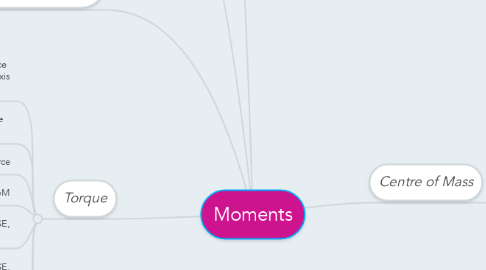Moments
by Arina Koul


1. Torque
1.1. it is the force applied a distance away from the pivot point or axis rotation.
1.2. Force (N) x Perpendicular distance (m) = Torque (Nm)
1.3. distance must be perpendicular to force
1.4. it is applied somewhere other than the CoM
1.5. when an object rotates CLOCKWISE, the value of torque is negative.
1.6. when an object rotates ANTI-CLOCKWISE, the value of torque is positive.
1.7. distance vector and force vector are perpendicular to each other
2. Note: work done does not equal to torque
2.1. work: distance vector and force vector are parallel to each other and in the same direction
2.2. torque: distance vector and force vector are perpendicular to each other
3. Equilibrium
3.1. Neutral
3.1.1. the frustrum will roll about but will not topple
3.1.2. its centre of gravity remains at the same height when it is displaced
3.1.3. the body will stay in any position to which it has been displaced
3.2. Conditions for stability
3.2.1. lowering its centre of gravity
3.2.2. increasing the area of its base
3.3. Unstable
3.3.1. the frustrum will topple slightly upon the slightest tilting
3.3.2. its centre of gravity is lowered when it is displaced
3.3.3. its weight has a moment about its pivot which causes it to topple
3.4. Stable
3.4.1. the frustrum can be tilted at quite a big angle without toppling over
3.4.2. its centre of gravity increases when it is displaced
3.4.3. its weight has a moment about the pivot which causes it to return back to its original position

